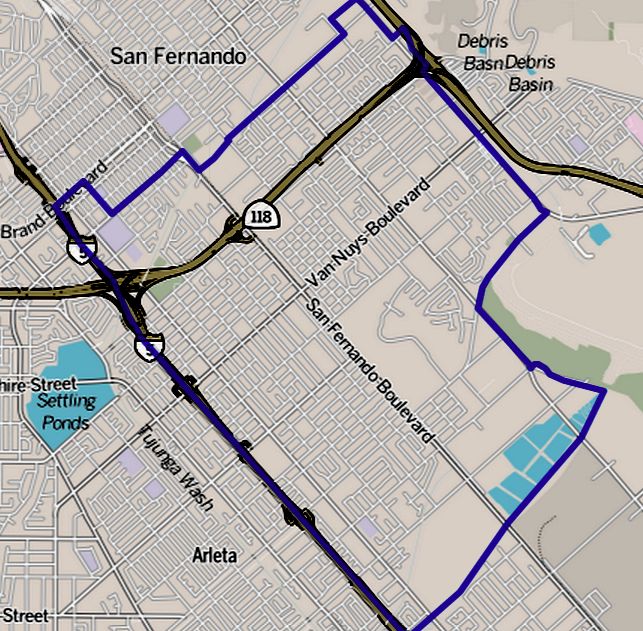The electric guitar requires external amplification to produce sound, differing from acoustic guitars. Pickups convert string vibrations into electrical signals, which are then amplified through loudspeakers. The sound can be altered using amplifier settings, guitar knobs, and effects such as reverb and distortion. Distortion and overdrive are key elements in genres like blues, jazz, rock, and heavy metal. Hybrid designs include semi-acoustic and acoustic-electric guitars, combining features of both electric and acoustic instruments.
1931: "Frying Pan" guitar designed
In 1931, the "Frying Pan", the first electrically amplified stringed instrument to be marketed commercially, was designed by George Beauchamp and Paul Barth.
October 1932: First Public Performance of Electric Guitar
In October 1932, the Ro-Pat-In Electro A-25 "Frying Pan" was the first electric guitar used in a publicly promoted performance, performed by Gage Brewer in Wichita, Kansas.
1932: Ro-Pat-In guitar has top so heavily reinforced that it essentially functioned as a solid-body instrument
In 1932, Gage Brewer's Ro-Pat-In guitar had a top so heavily reinforced that it essentially functioned as a solid-body instrument.
1932: Rickenbacker makes electric guitar designs
In 1932, Rickenbacker was already making their own electric guitar designs.
1932: Electric guitar invented
In 1932, the electric guitar was invented and adopted by jazz guitar players to play single-note solos in large big band ensembles.
1932: Commercial production of "Frying Pan" begins
In late summer of 1932, commercial production of the "Frying Pan" guitar began by the Ro-Pat-In Corporation (Electro-Patent-Instrument Company).
1933: Construction of Electro-Spanish Ken Roberts begins
Construction of Electro-Spanish Ken Roberts began in 1933, and fewer than 50 were constructed between 1933 and 1937.
1933: Dobro makes electric guitar designs
In 1933, Dobro was already making their own electric guitar designs.
1934: Vivi-Tone offers first solid-body guitar
In 1934, Vivi-Tone offered the first solid-body Spanish standard guitar, featuring a plywood body affixed to a wood frame.
1934: Company renamed Rickenbacker Electro Stringed Instrument Company
In 1934, the Ro-Pat-In Corporation was renamed the Rickenbacker Electro Stringed Instrument Company, and George Beauchamp applied for a United States patent for an Electrical Stringed Musical Instrument. Also, in 1934, the company National, AudioVox and Volu-tone were already making their own electric guitar designs.
1935: Rickenbacker markets the Electro Spanish
In 1935, Rickenbacker marketed the Electro Spanish, a substantially solid Spanish electric guitar made of Bakelite.
1935: Vega, Epiphone and Gibson make electric guitar designs
In 1935, Vega, Epiphone (Electrophone and Electar), and Gibson were already making their own electric guitar designs.
1935: Release of Electro-Spanish Model B and Electro-Spanish Ken Roberts
In early-mid 1935, the Electro String Instrument Corporation released the Electro-Spanish Model B and the Electro-Spanish Ken Roberts, which was the first full 25-inch scale electric guitar ever produced.
1936: Many others make electric guitar designs
By 1936, many other companies were already making their own electric guitar designs.
1936: Gibson markets first electric guitar
In 1936, Gibson marketed its first production electric guitar, the ES-150 model, featuring a single-coil, hexagonally shaped "bar" pickup designed by Walt Fuller, and later named for Charlie Christian.
1936: Mention of Gibson ES-150 in Guitar World magazine
In 1936, the Gibson ES-150 was an important electric guitar and mentioned on Guitar World magazine's top 10 list.
1936: Slingerland introduces solid-body electric model
In 1936, the Slingerland company introduced the Slingerland Songster 401, a wooden solid-body electric model, and its lap steel counterpart, the Songster 400.
1937: Construction of Electro-Spanish Ken Roberts ends
Construction of Electro-Spanish Ken Roberts ended in 1937, and fewer than 50 were constructed between 1933 and 1937.
1937: Patent issued for Electrical Stringed Musical Instrument
In 1937, George Beauchamp's patent for an Electrical Stringed Musical Instrument was issued, though other manufacturers were already producing their own electric guitar designs.
1940: Les Paul designs "log guitar"
In 1940, Les Paul designed and built a functioning solid-body electric guitar from an Epiphone acoustic archtop as an experiment. It was called the "log guitar".
1940: Creation of Les Paul's "log"
In 1940, Les Paul's "log" guitar was created; however, the feedback associated with amplified hollow-bodied electric guitars was understood long before this.
1941: Appleton develops solid-body guitar
In 1941, O.W. Appleton developed a solid-body Spanish style guitar resembling Gibson's Les Paul and contacted Gibson and Fender, but was unable to sell the idea.
1946: Merle Travis commissions a solid-body guitar
In 1946, Merle Travis commissioned steel guitar builder Paul Bigsby to build him a solid-body Spanish-style electric guitar.
1948: Bigsby delivers solid-body guitar to Travis
In 1948, Paul Bigsby delivered a solid-body Spanish-style electric guitar to Merle Travis.
1950: Fender Esquire and Broadcaster first made
In 1950, the first mass-produced solid-body guitars, the Fender Esquire and Fender Broadcaster (later Fender Telecaster), were first made.
1951: Mention of Fender Telecaster in Guitar World magazine
In 1951, the Fender Telecaster was an important electric guitar and mentioned on Guitar World magazine's top 10 list.

1952: Floating tailpiece appears on 1952 Gibson Les Paul
In 1952, a floating or trapeze tailpiece appeared on the 1952 Gibson Les Paul.
1952: Mention of Gibson Les Paul in Guitar World magazine
In 1952, the Gibson Les Paul was an important electric guitar and mentioned on Guitar World magazine's top 10 list.
1952: Gibson Les Paul introduced
In 1952, the solid-body Gibson Les Paul, designed by Ted McCarty, was introduced, sharing nothing in common for design or hardware with Les Paul's "log guitar".
1953: Mention of Gretsch 6128 Duo Jet in Guitar World magazine
In 1953, the Gretsch 6128 Duo Jet was an important electric guitar and mentioned on Guitar World magazine's top 10 list.
1954: Mention of Fender Stratocaster in Guitar World magazine
In 1954, the Fender Stratocaster was an important electric guitar and mentioned on Guitar World magazine's top 10 list.

1954: Introduction of the Fender Stratocaster
In 1954, the Fender Stratocaster was introduced and became extremely popular among musicians in the 1960s and 1970s.

1964: Mention of Rickenbacker 360/12 in Guitar World magazine
In 1964, the Rickenbacker 360/12 was an important electric guitar and mentioned on Guitar World magazine's top 10 list.
1975: Mention of Van Halen Frankenstrat in Guitar World magazine
In 1975, the Van Halen Frankenstrat was an important electric guitar and mentioned on Guitar World magazine's top 10 list.
1987: Release of Ibanez Jem
In 1987, the Ibanez Jem was released, featuring "24 frets" and an impossibly thin neck, designed to be the ultimate shredder machine.
Mentioned in this timeline

Los Angeles L A is the most populous city in...
Kansas is a Midwestern state in the United States bordered...
Trending
9 days ago California's Great America Theme Park Set to Close After Thrilling Decades by 2027

6 days ago Harry Styles Launches New Fragrance, Fuels One Direction Reunion Rumors at Glastonbury.
Pennsylvania is a U S state located in the Mid-Atlantic Northeastern Appalachian and Great Lakes regions It shares borders with...

3 months ago Pacoima House Explosion: Man Injured, Homes Evacuated Due to Fireworks
20 days ago Damson Idris stars in immersive F1 movie trailer with Brad Pitt.

2 months ago Rachel McAdams potentially cutting ties with Hollywood, lists LA home for $4 million.
Popular

Jupiter is the fifth and largest planet from the Sun...

A blue moon is defined in several ways most commonly...

Candace Owens is an American conservative and far-right political commentator...

Thom Tillis is the senior U S Senator from North...

Jeff Bezos is an American businessman renowned as the founder...

Kelley O'Hara is a celebrated American former professional soccer player...


